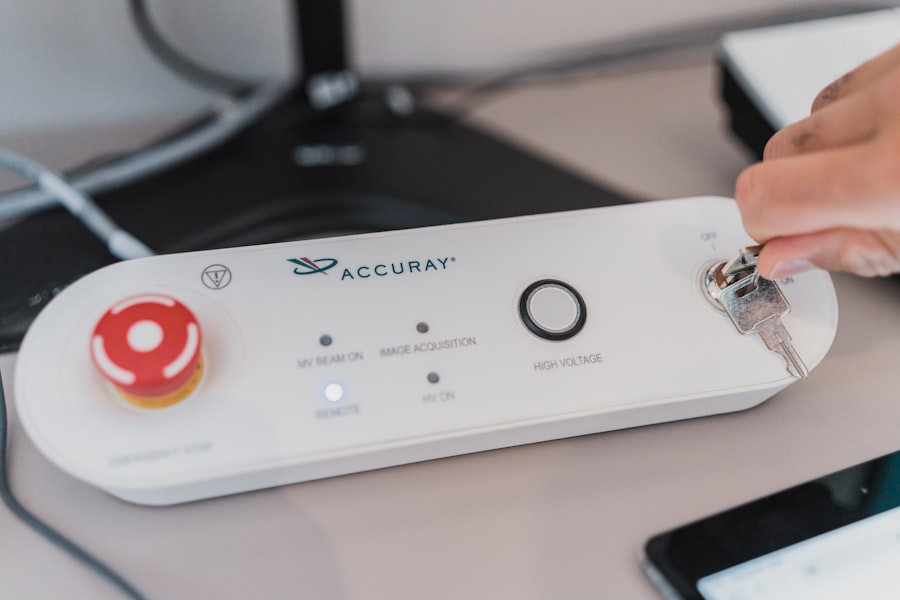Laser hair removal is a popular cosmetic procedure that utilizes concentrated light beams to target and eliminate unwanted hair. As you consider this option, it’s essential to understand how the process works. The laser emits a specific wavelength of light that is absorbed by the pigment in the hair follicles.
This absorption generates heat, which damages the follicles and inhibits future hair growth. The procedure is typically performed in a clinical setting by trained professionals, ensuring safety and effectiveness. During your initial consultation, the practitioner will assess your skin type, hair color, and overall health to determine if you are a suitable candidate for laser hair removal.
They will explain the procedure in detail, including what to expect during and after treatment. You may also be advised to avoid sun exposure and certain medications before your sessions to minimize risks and enhance results. Understanding these foundational aspects will help you feel more prepared and informed as you embark on your laser hair removal journey.
Key Takeaways
- Laser hair removal targets hair follicles to inhibit future hair growth
- Factors such as hair color, skin type, and hair thickness affect the number of sessions needed
- Different body areas may require varying numbers of sessions for optimal results
- Shave the treatment area before each session for better results
- Realistic expectations and timeline for results should be discussed with a professional before treatment
Factors Affecting the Number of Sessions Needed
The number of sessions required for effective laser hair removal can vary significantly from person to person. One of the primary factors influencing this is your hair growth cycle. Hair grows in three distinct phases: anagen (growth), catagen (transitional), and telogen (resting).
Laser hair removal is most effective during the anagen phase when the hair is actively growing. Since not all hairs are in the same phase at any given time, multiple sessions are necessary to target each hair effectively. Your skin type and hair color also play crucial roles in determining how many sessions you will need.
Generally, individuals with light skin and dark hair see the best results because the contrast allows the laser to target the pigment more effectively. Conversely, those with lighter hair or darker skin may require additional sessions due to reduced contrast. Other factors, such as hormonal imbalances or certain medical conditions, can also affect hair growth patterns, further influencing the number of treatments needed.
Determining the Ideal Number of Sessions for Different Body Areas

Different areas of the body may require varying numbers of laser hair removal sessions due to differences in hair density and growth rates. For instance, areas like the underarms or bikini line often respond more quickly to treatment, typically requiring around six to eight sessions for optimal results. These regions usually have coarser hair that absorbs laser energy more effectively, leading to faster outcomes.
On the other hand, areas with finer or lighter hair, such as the face or arms, may necessitate additional sessions. The finer texture of these hairs can make them less responsive to laser treatment, meaning you might need up to ten or more sessions to achieve satisfactory results. Additionally, factors such as skin sensitivity and individual response to treatment can also influence how many sessions you will ultimately need for each specific area.
Tips for Maximizing the Effectiveness of Each Session
| Session | Tip |
|---|---|
| 1 | Set clear objectives for the session |
| 2 | Encourage active participation from all attendees |
| 3 | Use visual aids to enhance understanding |
| 4 | Allocate time for Q&A and discussion |
| 5 | Provide practical examples and case studies |
To ensure that you get the most out of each laser hair removal session, there are several strategies you can employ. First and foremost, it’s crucial to follow your practitioner’s pre-treatment guidelines. This may include avoiding sun exposure, tanning beds, and certain medications that can increase skin sensitivity.
By adhering to these recommendations, you can minimize potential complications and enhance the effectiveness of the treatment. Another important tip is to maintain a consistent schedule for your sessions.
Sticking to this schedule allows you to target hairs during their active growth phase consistently. Additionally, consider discussing any concerns or questions with your practitioner after each session; they can provide valuable insights and adjustments tailored to your progress.
Managing Expectations: Realistic Results and Timeline
As you embark on your laser hair removal journey, it’s essential to manage your expectations regarding results and timelines. While many individuals experience significant hair reduction after just a few sessions, complete hair removal is not guaranteed for everyone. Factors such as hair type, skin tone, and hormonal influences can all impact your results.
It’s important to approach this treatment with a realistic mindset and understand that patience is key. Typically, you can expect to see noticeable results within a few weeks after your initial sessions. However, achieving optimal results may take several months of consistent treatments.
It’s crucial to remember that everyone’s body responds differently; some may see faster results while others may require more time. By maintaining open communication with your practitioner throughout the process, you can better understand what to expect and adjust your goals accordingly.
Potential Risks and Side Effects to Consider

While laser hair removal is generally considered safe, it’s essential to be aware of potential risks and side effects associated with the procedure. Common side effects include temporary redness, swelling, or discomfort in the treated area. These symptoms usually subside within a few hours or days following treatment.
However, in some cases, individuals may experience more severe reactions such as blistering or changes in skin pigmentation.
During your consultation, don’t hesitate to ask about their experience and any potential side effects specific to your skin type or medical history.
Being informed about these risks will help you make educated decisions and prepare for any possible outcomes during your laser hair removal journey.
Post-Treatment Care and Maintenance
After each laser hair removal session, proper post-treatment care is crucial for achieving optimal results and minimizing side effects. Your practitioner will likely provide specific aftercare instructions tailored to your needs. Common recommendations include avoiding sun exposure for at least a week following treatment and applying sunscreen diligently when going outdoors.
This helps protect your skin from potential irritation and pigmentation changes. Additionally, it’s essential to keep the treated area clean and moisturized. Using gentle cleansers and hydrating lotions can help soothe any redness or discomfort you may experience post-treatment.
Avoiding hot baths, saunas, or vigorous exercise for a few days can also prevent irritation in the treated area. By following these aftercare guidelines diligently, you can enhance your results and ensure a smoother recovery process.
Consulting with a Professional for Personalized Advice
Before committing to laser hair removal, consulting with a qualified professional is essential for personalized advice tailored to your unique needs. During this consultation, you can discuss your goals, concerns, and any medical history that may impact your treatment plan. A skilled practitioner will assess your skin type and hair characteristics to develop a customized approach that maximizes effectiveness while minimizing risks.
Moreover, ongoing communication with your practitioner throughout the process is vital for achieving the best results possible. They can provide insights into how your body is responding to treatment and make necessary adjustments based on your progress. By fostering this collaborative relationship with a professional, you can navigate your laser hair removal journey with confidence and clarity, ensuring that you achieve the smooth skin you desire while prioritizing safety and effectiveness.
If you are considering laser hair removal at home, you may be wondering how many sessions are required for optimal results. According to a helpful article on In Laser Hair Removal, the number of sessions needed can vary depending on factors such as hair color, skin tone, and the specific device being used. It is important to follow the recommended treatment schedule to achieve the best outcome.
FAQs
What is laser hair removal?
Laser hair removal is a cosmetic procedure that uses a concentrated beam of light (laser) to remove unwanted hair. The light energy is converted to heat, which damages the hair follicles and inhibits future hair growth.
How many laser hair removal sessions are typically required at home?
The number of laser hair removal sessions required at home can vary depending on the individual’s hair type, skin color, and the specific at-home laser device being used. However, most people require multiple sessions, usually ranging from 6 to 8 sessions, spaced several weeks apart, to achieve optimal results.
Why are multiple laser hair removal sessions necessary?
Multiple sessions are necessary for laser hair removal because hair grows in different stages and the laser is most effective on hair in the active growth phase. Multiple sessions ensure that all hair follicles are targeted during their active growth phase, leading to more permanent hair reduction.
Are at-home laser hair removal devices effective?
At-home laser hair removal devices can be effective for some individuals, but results may vary. It’s important to carefully follow the instructions for the specific device and to be patient with the process, as it may take several sessions to see significant results.
Are there any risks or side effects associated with at-home laser hair removal?
While at-home laser hair removal is generally safe, there are potential risks and side effects, including skin irritation, redness, and changes in skin pigmentation. It’s important to carefully follow the instructions and to perform a patch test before using the device on larger areas of the skin. If in doubt, it’s best to consult a dermatologist or a professional for advice.




